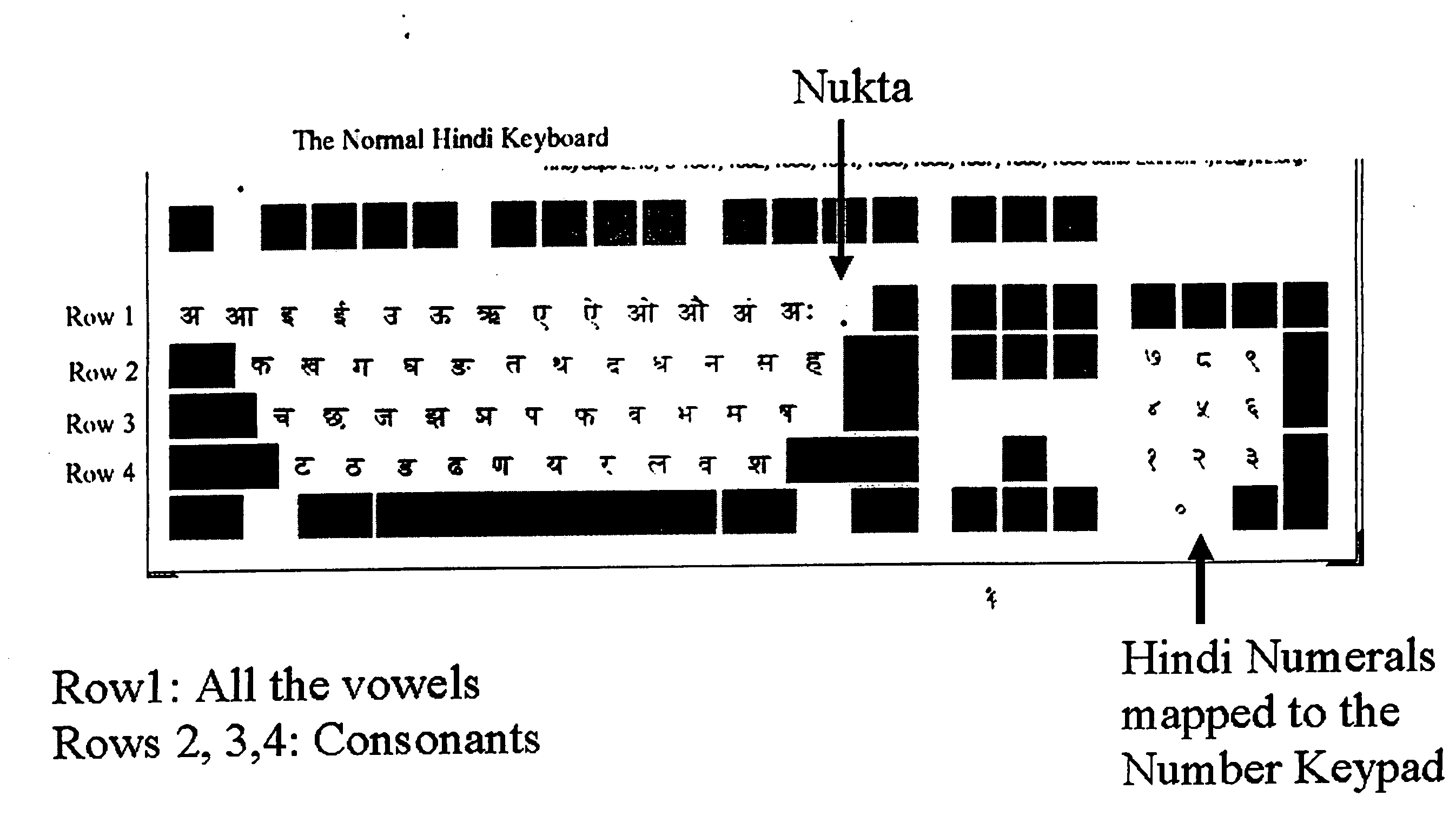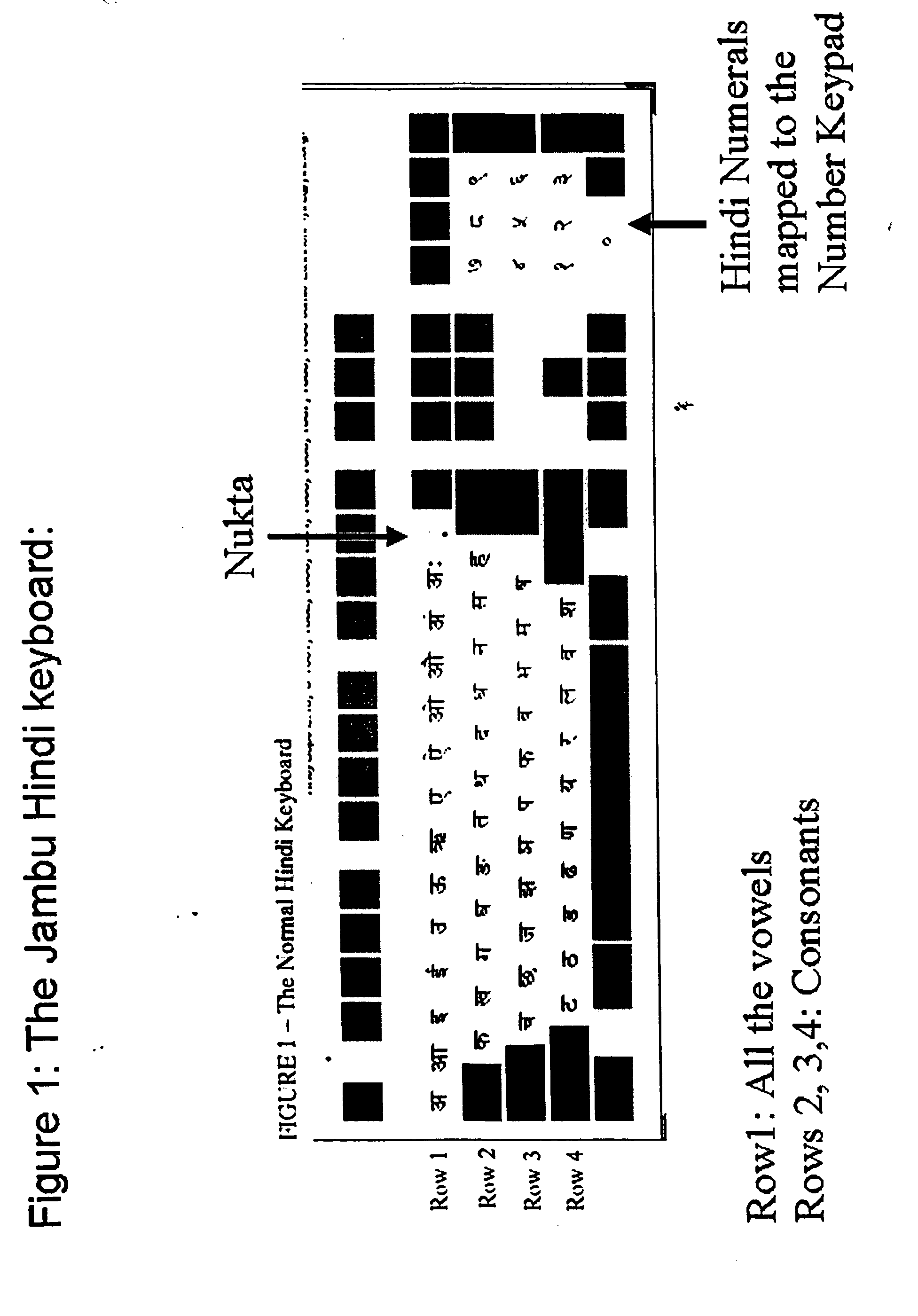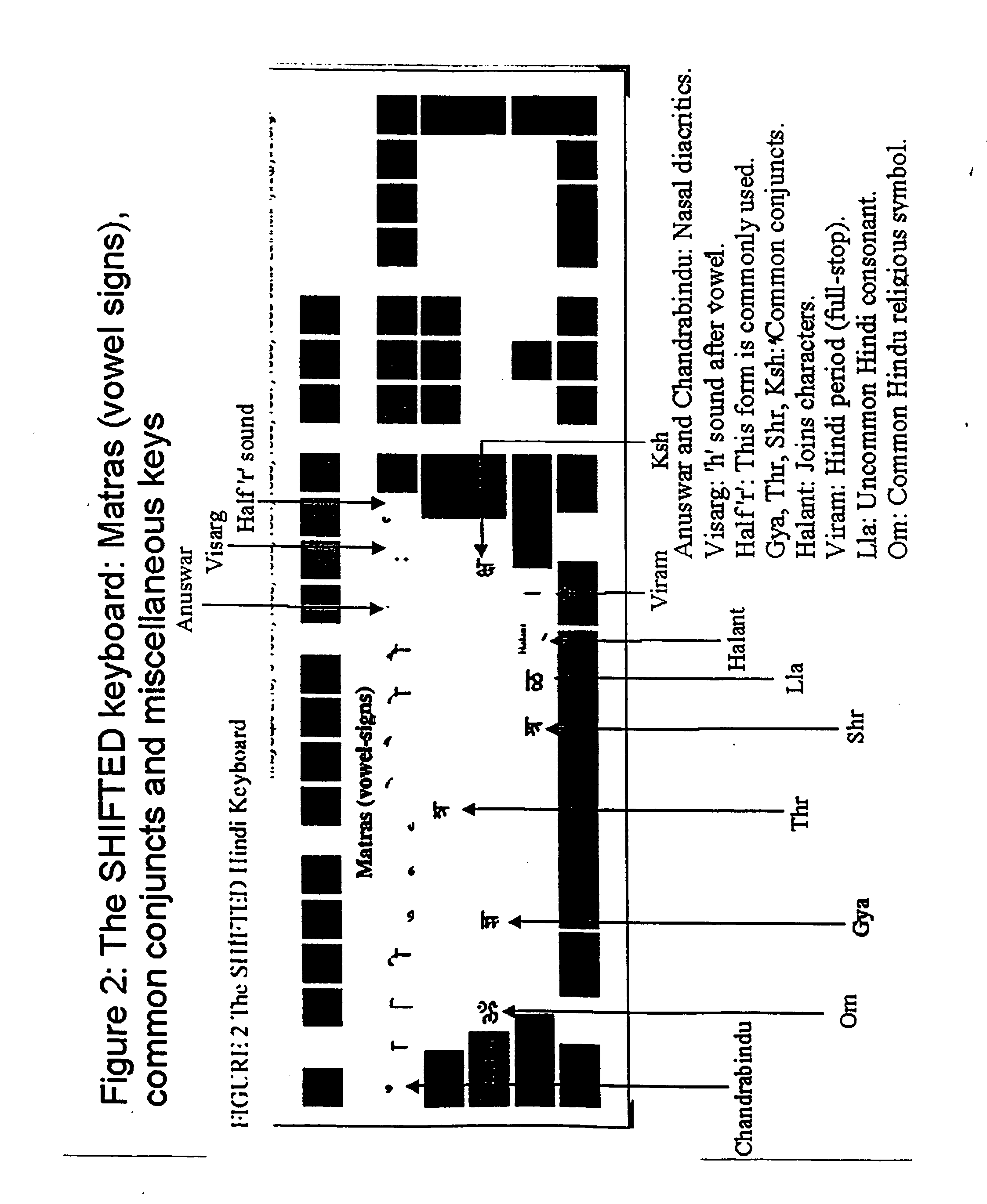User-friendly brahmi-derived hindi keyboard
a keyboard and hindi language technology, applied in the field of user-friendly brahmi-derived hindi keyboards, can solve the problems of generating additional complexities, burdensome and complicated keyboard entry of devanagari script, and affecting the learning curve of keyboard users, so as to reduce the number of keys and the effect of reducing the learning curv
- Summary
- Abstract
- Description
- Claims
- Application Information
AI Technical Summary
Benefits of technology
Problems solved by technology
Method used
Image
Examples
Embodiment Construction
[0029] As shown in FIGS. 1 and 2, the layout for a keyboard 20 includes a subset of characters from the Brahmi-based Devanagari script, specific to Hindi. For convenience, reference will be made to the Hindi script and alphabet, although the description and keyboard may also be applied to related Brahmi-derived scripts that have similar characteristics.
[0030] Other Brahmi-derived Indian scripts include the Northern scripts Marathi, Sanskrit, Gujarati, Punjabi, Assamese, Bengali, Oriya, Manipuri and Southern scripts Telugu, Tamil, Malayalam, and Kannada. Brahmi derived scripts used in languages outside India include Sinhala, Nepali, Burmese, Tibetan, Laotian, Thai, Khmer, Javanese, Bali, Batak, Bugis / Buginese and Tagalog.
[0031] As shown in FIG. 1, a portion of the Hindi alphabet may be mapped to the upper ASCII (G1) character set and the appropriate keyboard files modified, so that the Hindi script may be directly accessed from the keyboard. A key, which may be “sticky,” may be use...
PUM
 Login to View More
Login to View More Abstract
Description
Claims
Application Information
 Login to View More
Login to View More - R&D
- Intellectual Property
- Life Sciences
- Materials
- Tech Scout
- Unparalleled Data Quality
- Higher Quality Content
- 60% Fewer Hallucinations
Browse by: Latest US Patents, China's latest patents, Technical Efficacy Thesaurus, Application Domain, Technology Topic, Popular Technical Reports.
© 2025 PatSnap. All rights reserved.Legal|Privacy policy|Modern Slavery Act Transparency Statement|Sitemap|About US| Contact US: help@patsnap.com



